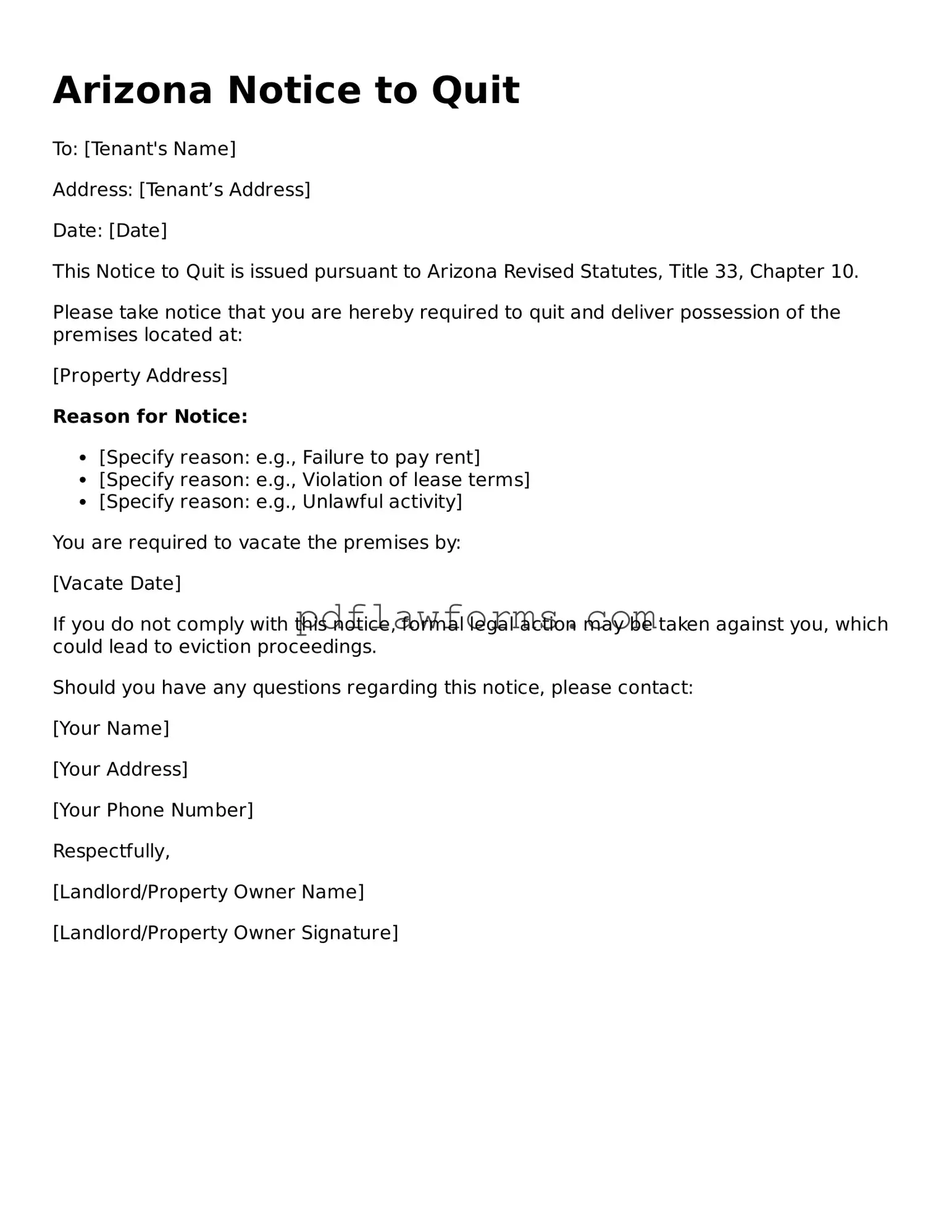In Arizona, the Notice to Quit form serves as a crucial document in the landlord-tenant relationship, particularly when a landlord seeks to terminate a lease agreement. This form is essential for ensuring that both parties understand their rights and responsibilities in the event of a lease termination. Typically, the notice outlines the reasons for eviction, which can range from non-payment of rent to lease violations, providing tenants with a clear understanding of the circumstances leading to this action. Additionally, the form stipulates the timeframe within which tenants must vacate the property, often ranging from a few days to a month, depending on the nature of the violation. It is important for landlords to deliver this notice in a manner that complies with state laws, ensuring that it is properly served to the tenant, which can include methods such as personal delivery or certified mail. By adhering to these guidelines, landlords can mitigate potential disputes and streamline the eviction process, while tenants are afforded the opportunity to address the issues raised in the notice before further legal action is pursued. Ultimately, understanding the nuances of the Arizona Notice to Quit form is vital for both landlords and tenants, as it lays the groundwork for a fair and orderly transition in the rental relationship.
